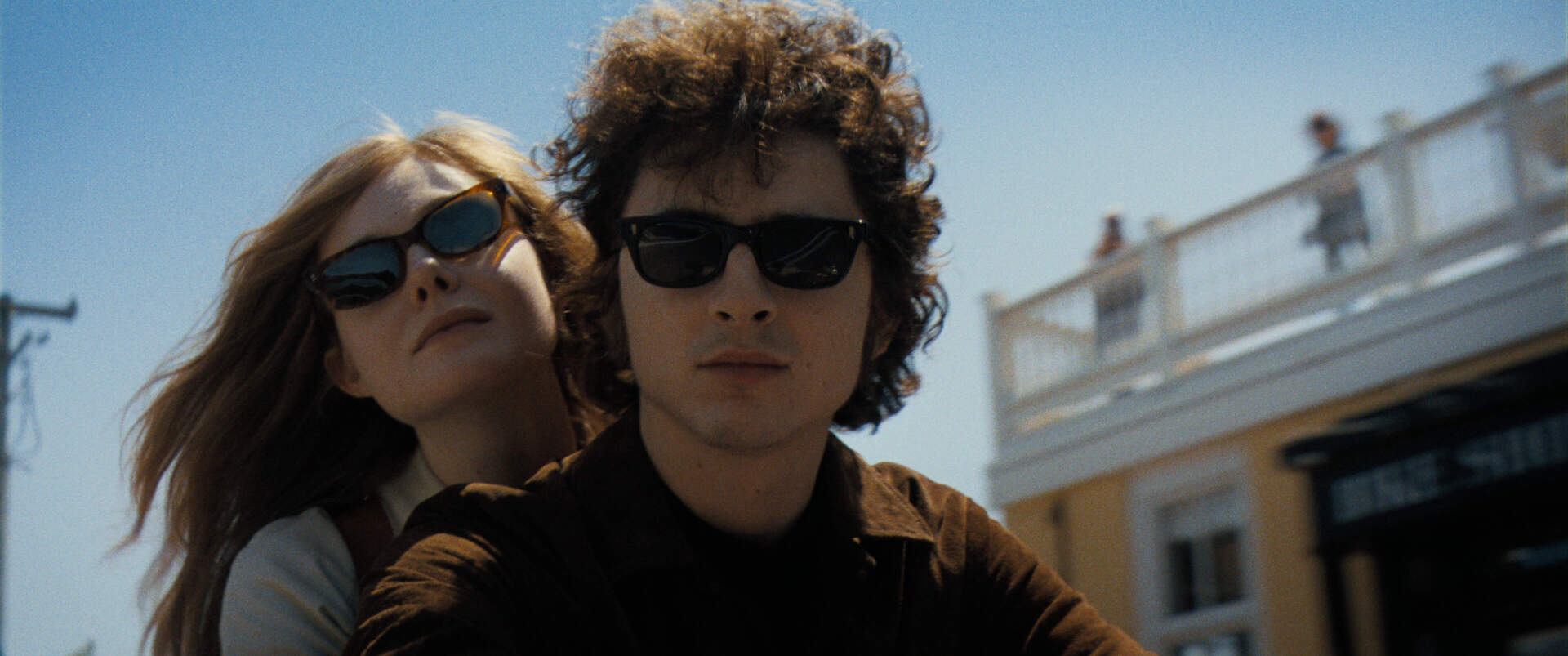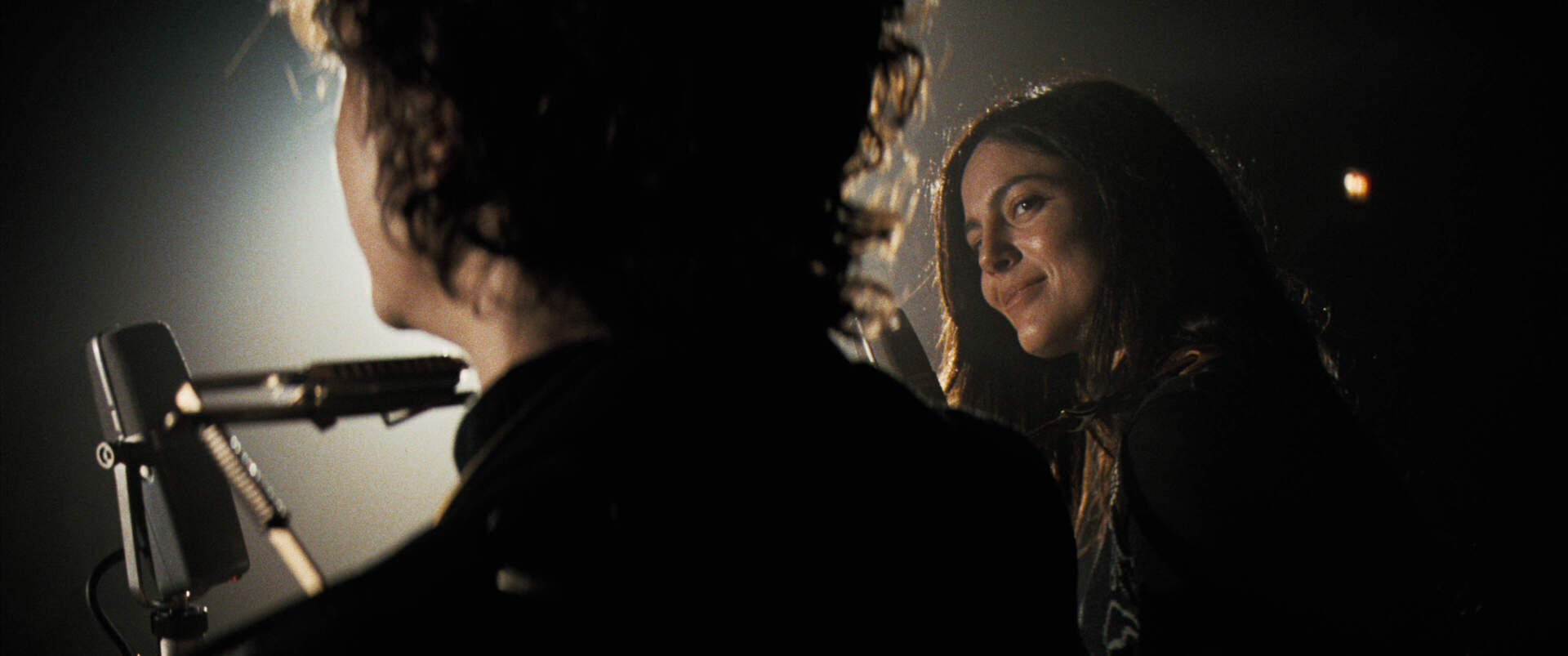Advertisement
Review
Bob Dylan biopic 'A Complete Unknown' is a conventional crowd-pleaser

The idea of making a conventional Hollywood biopic about Bob Dylan is absurd. American music’s great escape artist has spent the past 60 years shedding skins, restlessly reinventing himself while doing everything in his power to confound the kind of hagiography in which such official histories traffic. Heck, the last Dylan movie was a so-called documentary in which he and Martin Scorsese kept incorporating fictional characters for yuks. Bob’s the kind of artist who can write a memoir that leaves you with more questions than you had when you started reading. Whether radically rearranging his most popular songs in concert or putting interviewers on with poker-faced precision, he’s perpetually protean, impossible to pin down.
That’s why Todd Haynes had it right with his prankishly prismatic 2007 masterpiece “I’m Not There,” in which six different actors — including Heath Ledger, Cate Blanchett and Richard Gere — played different aspects of Dylan’s many selves in a film that shape-shifted cinematic styles from acid Westerns to Felliniesque surrealism and the French New Wave in order to approximate the songwriter’s swirl of influences. Challenging and playful in the manner of a Dylan song, “I’m Not There” contains so many blasphemies and rock ‘n’ roll heresies that when I named it the best film of that year, the music editor at the newspaper where I worked demanded that I be fired. (I feel like Bob would have loved that.)
If “I’m Not There” was the antithesis of the modern musical biopic, “A Complete Unknown” is probably its platonic ideal. “Walk the Line” director James Mangold’s movie about Dylan’s early years in New York City is pure Hollywood hokum, compressing a tumultuous chunk of cultural history into an easily digestible arc, simplifying complicated characters into one-note archetypes and turning an unconventional life into a conventional crowd-pleaser full of Oscar clips. Having seen the picture in a packed house, I can testify that it plays like gangbusters. The cross-generational appeal of casting teen heartthrob Timothée Chalamet as boomer icon Dylan makes this your best bet for a movie to go see with the whole family over the holidays, and it’s a pleasant way to spend 141 minutes.

It ain’t no use to sit and wonder why they keep making movies like this. They usually score Academy Award nominations for their stars, and they’re great for album sales, or streams, or whatever the metric is these days. Dylan’s manager Jeff Rosen shares a producing credit on the film with Chalamet, even though Bob himself is maintaining plausible deniability, acting as if he still hasn’t seen it. In one of his typically cryptic social media posts, Dylan wrote: “Timmy’s a brilliant actor so I’m sure he’s going to be completely believable as me. Or a younger me. Or some other me.”
In today’s marketplace, “A Complete Unknown” is perhaps a necessary evil and probably the best version of this movie that we could hope for. It’s a handsome production with some fine performances and a well-structured screenplay by Mangold and Jay Cocks, the former Time Magazine film critic who co-wrote Scorsese’s “The Age of Innocence,” “Gangs of New York” and “Silence.” The film blessedly does not attempt to “explain” Dylan, allowing him an enigmatic reserve befitting the film’s title.
It begins with his 1961 arrival in Greenwich Village, where under the tutelage of Pete Seeger (Edward Norton) and an ailing Woody Guthrie (Scoot McNairy), the young Dylan proceeded to turn the folk scene upside down, before ultimately forsaking his mentors and plugging in to play rock ‘n’ roll at the 1965 Newport Folk Festival, an oft-mythologized moment that “split the sixties,” according to the Elijah Wald book on which the film is ostensibly based.

This period and its ramifications were covered quite brilliantly in Scorsese’s 2005 “No Direction Home: Bob Dylan” (the documentary in which they didn’t make anything up — at least as far as I know). It’s in many ways the quintessential Dylan story and key to his legend: a songwriter hailed as the voice of a generation turned his back on that title and infuriated his audience by stubbornly following his own muse. In this era of obsequious, clout-chasing artists and pandering fan service, Dylan’s lifelong commitment to doing whatever he darn well pleases seems positively heroic.
“A Complete Unknown” follows “Dune: Part Two” as Chalamet’s second reluctant messiah role of the year, and he continues to impress this critic as a thoughtful and diligent young man who doesn’t quite have the sauce. Chalamet worked with the same acting coaches who helped Austin Butler embody Elvis Presley a couple of years ago, but there’s more to a performance than just mimicry. “Timmy” has got all the tics and mannerisms, the smoked eyelids and punched cigarettes, but what he’s missing is Dylan’s mischief. The role needed the rascally charisma of a young Jack Nicholson or Leonardo DiCaprio’s ability to coax the audience into a conspiratorial relationship. Chalamet nails Dylan’s smirk but not the sly twinkle behind it. It ain’t him, babe.
Advertisement
On the other hand, this is Edward Norton’s best performance since the 1990s, and maybe his most soulful ever. It takes a scene or two to acclimate to how big he goes with the upright posture and unflappable earnestness that made Pete Seeger sometimes seem like a human Muppet character. “A Complete Unknown” embellishes Seeger’s mentorship of Dylan considerably, but it’s the most touching part of the picture. Disarmingly dorky, with his banjo always at the ready, Norton plays the Fred Rogers of folk music with unguarded emotional directness, heartbreaking as he shows us a man coming to realize that the culture has passed him by. There’s such a wonderful fullness to Norton’s work, underlining the difference between a performance and an imitation. Chalamet’s doing an imitation.
Poor Elle Fanning is lost as Dylan’s first Greenwich Village girlfriend Suze Rotolo, here rechristened Sylvie Russo — presumably for legal reasons — and relegated to pining helplessly while Bob sneaks around with Monica Barbaro’s Joan Baez. Barbaro is terrific, less willowy and more overtly sexy than the real singer, but she captures the flinty, eye-rolling spirit that makes Baez the funniest interview subject in Scorsese’s Dylan documentaries. The movie contrives a love triangle that comes to a head on that fateful 1965 weekend in Newport (even though in reality, Bob was already living at the Chelsea Hotel with his future wife Sara Lownds by then) with Barbaro and Chalamet doing a blistering duet of “It Ain’t Me, Babe” where the lyrics say everything the characters cannot.

That’s where Mangold’s film excels, allowing us space to sit and really listen to these songs. (Though let’s face it, however capably sung by the actors, these are not the ideal renditions.) I can’t remember the last time I saw a movie with as many beautiful reaction shots as “A Complete Unknown.” The most powerful parts of the film play across Norton and Barbaro’s faces, as they watch this little pipsqueak come out of nowhere and seemingly effortlessly do everything they’ve been working at their entire lives. One of the best moments finds Bob performing “The Times They Are A-Changin’” for the first time at Newport in 1964, the entire crowd enraptured and singing along to the chorus with a fury that comes to terrify the performer. (Dylan didn’t actually debut the song that day, but it’s a heck of a scene.)
I’ve been to nine Bob Dylan concerts and own 35 of his albums, which to the sane people in my life sounds obsessive, but among Dylan-ologists I’m basically a dilettante. I’m sure there will be months of intense arguments about this film’s emendations and elisions, including why the movie is so fuzzy about when “Bringing It All Back Home” came out. I’m in the camp that none of that stuff really matters, given that this guy’s been lying about his past since he was 20 years old. What matters is that it’s a polished, entertaining picture that follows a popular formula to a T, efficient and entirely unchallenging. Essentially the opposite of a Bob Dylan song.
Some fans are already furious that the angry audience member shouting “Judas!” on Dylan’s most notorious live recording has been moved from Manchester to Newport. But I was more rankled by what happens next: when Bob’s iconically profane exhortation to the band becomes the more family-friendly “Play it loud.” Then again, I suppose the change makes sense for such a smooth movie about an unapologetically prickly artist.
“A Complete Unknown” opens in theaters on Wednesday, Dec. 25.
